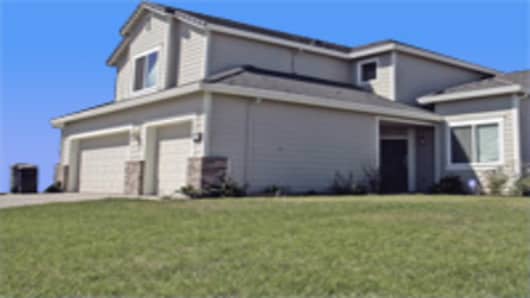With anxiety over the subprime mortgage market, calls for tighter lending standards, continued high inventory of unsold homes and home prices dropping from coast to coast, to call Tuesday’s housing starts number curious is an understatement. The U.S. Department of Commerce reports housing starts in February jumped 9% from a month ago but are still 28.5% below February 2006. This is the biggest jump since January of last year and comes off a 14% drop in starts in January.
“We have seen over the last several months, the trend has been down in starts and people have been worried more about getting rid of existing inventory than building new inventory,” says Greg Heym, chief economist for Halstead Properties. “Obviously they’re optimistic about the future and they’re thinking several months down the road, not necessarily looking at what’s happening now.”
What’s happening now is a firestorm of attention to rising mortgage delinquencies and foreclosures and the slew of subprime lenders going out of business. As federal regulators and Capitol Hill lawmakers call for tighter lending standards, mortgage bankers are already there, walking away from riskier loan products and requiring more money down or more verification of income and assets.
“We’re having to do a lot of reassuring with our customers, potential buyers who aren’t even in the subprime area,” says Chicago area builder John Carroll, President and CEO of Kirk Homes. Carroll says he’s seeing good traffic through his higher end development in Bolingbrook, but says he’s also hearing a lot of concerns about the market, price sustainability and mortgage rates as well as mortgage availability.
While the starts number sounds promising for the spring market, or at the very least, optimistic, some are calling it an aberration, possibly due to weather or to the steep drop in January starts. The fallout from the recent subprime implosion may not be showing up yet, as purchasers today may have secured financing several months ago.
The building permit number in the report, an indicator of future building, is off 2.5% from January and off 28.6% from February, 2006; builders are clearly being cautious, with fewer and fewer “spec” homes in the pipeline.
“Inventories are certainly much higher on month supply basis, they’re much higher on an absolute basis as well. They appear to have stabilized – we wouldn’t be surprised to see them creep up a bit as we head into the spring season,” Todd Vencil, a housing at BB&T Capital Markets.
Inventories of unsold homes are coming down off their peak last fall, prices are coming down on a nationwide average, and that could offset some of the anxiety over the subprimes.
“It’s not that there aren’t subprime woes out there, there are to be sure, and I think they’ll get worse,” says Richard Dekaser, Chief Economist at National City Corp. “It’s just that we have the more important fundamentals putting a floor under the market, and I think that will prevent this from becoming another leg down.”
Others are not quite so sure. Vencil says it’s still too soon to qualify or quantify the effects of the subprime issues on lending and on home prices. “We were muddling through trying to find a bottom during ’07 already. I think this may slow that process down a bit – I don’t think we have the information yet to say that it’s going to derail it though.”
Good Housing Starts Number - But Will They Sell?
The new housing starts increase of 9% sounds like a great number yet should have been expected not due to market fatigue but timing in the sales cycle. Most new homes are sold in late spring/early summer to allow customers to move family and begin the new school year in their new city. If we back off from that period and allow a 90 day build schedule, guess what, February looks like a very good month for starts. Does this mean they will sell? Nope. Cancellation rates remain 40%+, indirect promotional spending by builders is at an all time high (anyone need a plasma television?), major green-field builders are writing off land contract options in the hundreds of millions of dollars, etc, etc.
Lets review for a second the current state. Sub prime lenders are no longer a viable source of funds, foreclosure rates are stimulating much needed regulations for money centers and builders so as not to sell to people unable to financially own a home and the big, big, unknown is still existing home sales. Existing homes can enter and leave the market without any control from builders or money centers. The bottom line is that population is growing by 3% per year, that’s 9MM people, divided by 3.5 persons per household or 2.57MM units. Now, how many existing homes are for sale? About 6.5MM homes are currently for sale making the annualized total homes for sale 8MM. That means it will take 3.1 years to absorb the total inventory without any new construction or existing homes entering the market.
Thanks for all your great reporting and updates. Best Regards, William H. Seeger, C.P.M., CGB
Questions? Comments? RealtyCheck@cnbc.com



